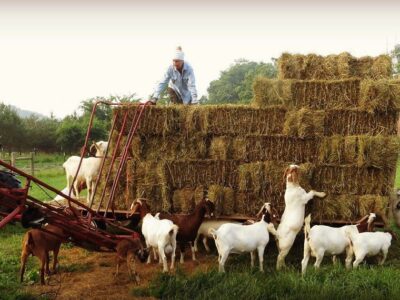Seasoned gardeners know you don’t have to put your soil to rest once the summer crop has been harvested. Planting a fall garden not only provides produce to help you get through the winter – but it also protects and builds your soil.
The trick to successful fall gardening is choosing the right kinds of vegetables and planting them at the right time. Better Homes & Gardens suggests “planning backward,” which means starting with your area’s average first fall frost date and then determining the number of days it takes for a particular vegetable to harvest. The harvesting time is usually listed on the seed packet or catalog description.
Once you know the harvest time, count back from the first frost date and add two weeks to account for the slower growing process for fall vegetables. That should let you know when to plant. Although the planting time depends on the vegetable, you’ll typically count back 12 to 14 weeks from the average first frost date.
The Old Farmer’s Almanac recommends planting your fall garden in mid-summer – late July to August – because temperatures are still warm and the days are longer. But you have some wiggle room here, depending on where you live. For example, in colder climes like Minnesota – where the average first frost date is as early as Sept. 8 – you’ll want to start planting some veggies in June. You can wait longer if you live in Charlotte, N.C. where the average first frost date is Oct. 28; or Los Angeles, where the date is Dec. 8. Tropical climes like Miami rarely get frost at all, so the date is not applicable.
In terms of what to plant, root vegetables such as carrots, radishes, beets, and turnips do well in the fall. But don’t limit yourself to just those. Leafy greens, cabbage, and kale are also suitable for fall planting.
Before planting your veggies, you’ll need to prepare the garden. Begin by clearing out the crops that aren’t performing well, such as those that are diseased or dried out from the heat. Next, pull all of the weeds and then add compost to the soil to get the maximum performance from your garden.
Be sure to plant the seeds deeper in the fall than you did in the spring. Because the ground is warmer when planting fall crops, putting them a little deeper into the soil helps keep them cool and moist. For hot climates, it’s a good idea to start your seeds indoors to keep them cooler.
Keep your fall crops well-watered – especially during July, August, and September, when the weather is still hot. Give them at least one deep watering per week rather than several light waterings. When frost is in the forecast, cover the crops to help them retain warmth. You can use an old bedsheet, blanket, tarp, or row cover.
Choosing which vegetables to plant for your fall garden depends on what you like to eat. The following are vegetables that do well in the fall, along with a couple of tips to ensure your harvest is successful:
Beets: These are best planted in late summer when the worst of the heat is over.
Bok Choy / Pak Choi: These types of Asian greens do well in the fall because they like the cooler weather and leaf pests are less of a problem. Harvest the heads as you need them.
Broccoli: Since broccoli takes several months to mature, consider using transplants instead of seeds to get a head start.
Brussels sprouts: These do best in temperatures between 45 and 75 degrees, making them a good fall crop. They can even tolerate a couple of days below freezing.
Cabbage: As with broccoli, you’ll do best using transplants rather than seeds. Most cabbage varieties can survive a light frost and even grow in winter with a cover.
Carrots: Smaller varieties of carrots like Thumbelina and Paris Market can mature in less than two months, but others take longer, so you’ll need to get them planted early.
Cauliflower: For best results, grow cauliflower under row covers to prevent cabbage worms.
Kale: For fall gardens, plant kale seeds in mid-to-late summer or transplant them in late summer.
Lettuce: Try not to plant lettuce when it’s really hot, otherwise it will bolt to seed. Because lettuce grows quickly, you can plant in mid-August. Make sure they are protected from frost.
Peas: Many pea varieties will be ready to pick within 50-60 days, so you can wait a little longer to plant them.
Radishes: Winter radishes such as Round Black Spanish do better in the fall because they like cool weather.
Spinach: Spinach is great for the fall because it only takes 30-40 days to mature.
Turnips and Rutabagas: These both require a long growing season of 100 or more days. The good news: you don’t have to worry about frost because you’ll only be using the roots instead of the tops.





 Copyright
2024
Root and Vine
Copyright
2024
Root and Vine